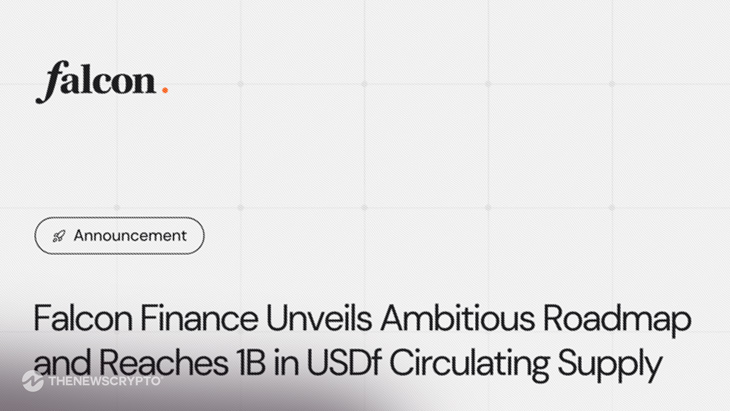- Falcon has achieved $1 billion in circulating supply since its launch earlier this year, ranking among Ethereum’s top ten stablecoins.
- Building on that, Falcon’s goals for the rest of 2025 include creating regulated fiat corridors in the eurozone, Latin America, Turkey, and other dollar markets.
Today, Falcon Finance unveiled its 18-month strategic roadmap, demonstrating its transformation from a pioneer in synthetic-dollars to a comprehensive financial organization that smoothly integrates decentralized finance, centralized cryptocurrency, and conventional banking.
Falcon has achieved $1 billion in circulating supply since its launch earlier this year, ranking among Ethereum’s top ten stablecoins by market capitalization. It also successfully completed the first live mint of USDf against Superstate’s tokenized U.S. Treasury fund in the industry and obtained a 116 percent over-collateralization audit from ht.digital. Falcon’s reputation for institutional rigor and open risk management has been solidified by these accomplishments.
Building on that, Falcon’s goals for the rest of 2025 include creating regulated fiat corridors in the eurozone, Latin America, Turkey, and other dollar markets to guarantee USDf liquidity around-the-clock with sub-second settlement SLAs. By bringing USDf to top Layer 1 and Layer 2 networks, a multichain deployment will maximize cross-chain capital efficiency for institutional trading desks and corporate treasuries.
In order to provide bankable USDf products, overnight yield cash-management solutions, tokenized money-market funds, and physical gold redemption services, Falcon will concurrently collaborate with authorized custodians and payment agents. The goal of ongoing talks with U.S. and foreign authorities is to align Falcon’s products with Europe’s MiCA framework and get licenses under the GENIUS and CLARITY Acts.
In order to onboard corporate bonds, private credit, and securitized USDf funds via SPV-backed structures, Falcon plans to implement a modular real-world asset engine by 2026. In addition to creating bank-grade securitizations and licensed rails for automated yield distribution with institutional-level reporting, the protocol will extend into tokenized stocks and USDf-centric investment vehicles on-chain. Additionally, Falcon will extend its physical redemption services for gold and other high-value assets in major financial hubs such as Hong Kong, the UAE, and the larger MENA region.
Andrei Grachev, Managing Partner at Falcon Finance, said:
“Surpassing $1 billion in USDf supply, validating our reserves through third-party audits and delivering the first live RWA mint have proven our ability to marry compliance with innovation. Now, by extending our fiat rails across every major market, modularizing real-world asset tokenization and enabling seamless interoperability between TradFi and CeDeFi, we are creating the connective tissue of tomorrow’s financial system. Falcon is building a single, programmable liquidity layer that serves both institutional treasuries and the next generation of decentralized applications.”
Falcon Finance is building the layer of infrastructure that links onchain and offchain financial institutions by means of capital, collateral, and composability. Our goal is to provide a single framework that allows capital allocators, institutions, and protocols to convert assets into useable liquidity in a transparent, safe, and flexible manner.
In order to provide onchain liquidity and unlock value across many financial domains, we make it possible to employ any yield-generating, custody-ready asset as enforceable collateral, regardless of whether it is crypto-native, tokenized in the real world, or fiat-linked.
Falcon facilitates the flow of wealth across forms and contexts, enabling institutional deployment, onchain methods, and real-world settlement by fusing legal structure, modular liquidity channels, and composable mint/redeem logic.








